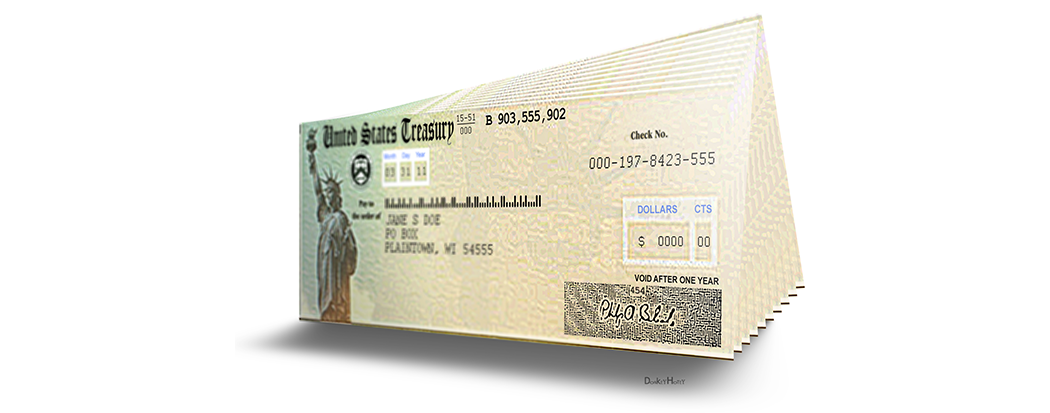Provides Direct Relief

A key and critical provision in the American Rescue Plan is the one providing for direct payments to millions of Americans. The goal is to deliver immediate relief to American families bearing the brunt of this crisis.
The American Rescue Plan devotes about $1 trillion towards building a bridge to economic recovery for working families. All told, a single parent with one young child making the minimum wage could see her income increase from the equivalent of $7.25 to around $11 per hour. The plan will:
- Give working families a $1,400 per-person check, bringing their total relief payment from this and the December down payment to $2,000. More than 85% of households will receive a check and checks in this bill are bigger than the checks in the CARES Act or in the December bill. And, for the first time, adult dependents are entitled to a check as well. This means a lower or middle-income family of four will see an additional $5,600 in their pockets.
- Extend current unemployment insurance benefits and eligibility to September 6 (saving 11 million Americans from losing benefits starting in about a week), provide a $300 per week supplement, and help protect Americans from surprise tax bills on unemployment insurance they received last year.
- Help Americans stay in their homes by providing emergency aid to cover back rent. In addition, the bill provides assistance to help struggling homeowners catch up with their mortgage payments and utility costs through the Homeowners Assistance Fund. And, it provides additional funding for families and individuals who are recovering from or at risk of homelessness.
- Increase the value of Supplemental Nutrition Assistance Program (SNAP) benefits. The American Rescue Plan will increase SNAP benefits by 15 percent through September 2021. The bill also funds partnerships with restaurants to feed American families and keep workers in the restaurant industry on the job. And, it provides U.S. territories like Puerto Rico additional nutrition assistance funding, in addition to funding to make sure women, infants and children get the food they need to help address food insecurity.
- Increase the Child Tax Credit from $2,000 per child to $3,000 per child ($3,600 for a child under age 6) and make 17-year-olds qualifying children for the year. This means a typical family of four with two young children will receive an additional $3,200 in assistance to help cover costs associated with raising children. The families of more than 66 million kids will benefit.
- Increase the Earned Income Tax Credit for 17 million workers by as much as $1,000. The top occupations that will benefit are cashiers, food preparers and servers, and home health aides – frontline workers who have helped their communities get through the crisis.
- Expand child care assistance, help hard-hit child care providers cover their costs, and increase tax credits to help cover the cost of childcare. This is the single biggest investment in child care since World War II.
- Give families an additional tax credit to help cut child care costs. Families will get back as a refundable tax credit as much as half of their spending on child care for children under age 13, so that they can receive a total of up to $4,000 for one child or $8,000 for two or more children. Provide an additional $1 billion for states to cover the additional cash assistance that
- Temporary Assistance to Needy Families (TANF) recipients needed as a result of the crisis.
- Lower or eliminate health insurance premiums for millions of lower- and middle-income families enrolled in health insurance marketplaces. A family of four making $90,000 could see their monthly premium come down by $200 per month. This will help well over a million uninsured Americans gain coverage. The plan also subsidizes premiums for continuation health coverage (COBRA).
(Source: White House Fact Sheet)

